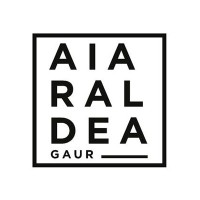The future of the Basque media

Over the past few weeks I have had these two books in my hands: The space of reflection in Basque (Euskaltzaindia, 2024) and Mariano Ferrer, reflexive journalism. Journalism and commitment (Erein, 2023) . I have read that 42.2% of Basques see ETB1 and 20.6% read the Basque press on behalf of the Elkar Foundation, according to the survey conducted by Siadeco in 2018. This is not bad, considering that 22% of the Euskaldunes of the CAV – 6.7% in Navarre and 7% in Iparralde – usually use Euskera rather than Castilian.
In the book by Euskaltzaindia I have read that in the future of the Basque media a “matrix change” is needed. That in the last 40 years budgets and vision have been fundamentally around ETB, in “national perspective”, and that thereafter this matrix would have to be transferred to “local media”, without abandoning the national perspective, so that in this area the Basque media “assume the leadership of communication”. That has been possible in Debagoiena and that in other places too there may be. That is the essence of the message. And maybe yes, who knows, as in other areas, it makes a lot of sense to reinforce the local and the close.
However, this strengthening also mentions another important element: these communication media in the region should have “shared editorial lines, transversally”, as in Debagoiena. A transmitter, how far? From the Spanish right to the Abertzale right? Or with the acronyms, from PP to EH Bildu? Or mainly between abertzales, and therefore from EH Bildu to the PNV?
Actually, with my entire career in ARGIA, I don't think that journalism and the “crushing editorial line” are very compatible, but I recognize that there are several forms of journalism, and that the Basque needs all of them. Yes, because of what is said or what is not said, there is no journalism without editorial line. I suspect that what is of all or all, in the end, and by power, assumes that “of some” is more than of others, especially of those who put money, whether public or private.
Mariano Ferrer had many reflections and beautiful concepts about journalism: “Communication is a struggle to structure consensus around one’s own ideas”, “it is not enough to give news of the news, the reasons and reasons for the event and the data have to be explained”, “the journalist has to squeeze the ruler, the politician”, or “credibility is achieved from independence”, among other things.
For 40 years, EITB has looked above all at itself and at Lakua. The summary by Mirentxu Purroy is as exhaustive as descriptive: “La televisión Arantxa Tapia”. Being the strongest, it could have had the leadership of the Basque media and other roles in the collaboration between them, but it has not been so. I am convinced that the real changes in the matrix are more in the attitudes and in the view of the country than in the native, and from there will be more strengthening of the media in Basque: From the other EITB configuration, which, as Ramón Zallo says, is subject to the pending Basque Communication Act? ; strengthening cooperation between initiatives and institutions; and cooperation between the media, 40 years scarce and still rather scarce. Everyone from their own nature, the possibility of collaboration between us is much greater than that of competition.
Gaur abiatu da Bizi Baratzea Orrian kide egiteko kanpaina. Urtaro bakoitzean kaleratuko den aldizkari berezi honek Lurrari buruzko jakintza praktikoa eta gaurkotasuneko gaiak jorratuko ditu, formato oso berezian: poster handi bat izango du ardatz eta tolestu ahala beste... [+]




















